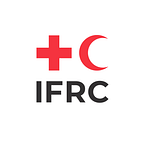Indonesia: 10 years on — learning lessons from the past to protect future generations
By Ika Koeck, IFRC
At first glance, Banda Aceh appears to be a fast-developing city. New highways, buildings and bridges stretch across the landscape, while well-paved roads connect the main city to provinces in the countryside. It is hard to imagine that a decade ago this same landscape was a wasteland ravaged by seawater. On December 26, 2004, a 9.1 earthquake off the coast of Aceh triggered a massive tsunami. Settlements five kilometres inland were affected when waves reaching up to 20 metres high pummelled the western coast. Entire coastal communities disappeared in the surge.
Fauzi Husaini, better known as ‘Pak Poli’ is head of disaster management at the Indonesian Red Cross in Aceh. He was in West Java for disaster risk reduction training on the morning the tsunami struck. He returned home to a scene of chaos, shocked by what he saw.
“According to local legend, Aceh experienced a tsunami hundreds of years ago, but we never took it seriously,” he said.
The absence of an effective early warning system or evacuation plans contributed to the massive number of casualties. In Aceh alone, 165,945 people were reported dead or missing and 573,000 were displaced.
Building 22,000 permanent homes, providing safe water to thousands of people, repairing schools and hospitals and supporting people to resume their livelihoods were some of the programmes undertaken in the recovery operation launched by the International Federation of Red Cross and Red Crescent Societies.
Encouraging communities to be ready for the next disaster was — and still is — of paramount importance.
“The tsunami has taught us that we need to be well prepared, especially to ensure that future generations never experience what we did,” says Pak Poli.
Disaster risk reduction activities are now a familiar sight in the provinces surrounding Aceh. In Gampoeng Baru Sayeung, earthquake and tsunami drills are common. Red Cross volunteer Elis Panjahitan, 29, was born in the village and has seen the positive effect of these drills. “We were badly affected by the earthquake and tsunami, so everyone in this village is committed to attending these drills,” she said.
Other activities have helped to reduce the impact of disasters and boost community self-sufficiency. Several kilometres away from Gampoeng Baru Sayeung, at the edge of a swamp flanking the coastline’s new highway, a group of volunteers and villagers can now be seen tending to mangrove saplings under the heat of the morning sun.
Red Cross volunteer, Juliawati, who oversees the management of the mangrove plantation, has spent the last few months teaching members of the local community how to care for the saplings.
“This area was partially destroyed by the waves because there was no protection against them, so now we plant as many mangrove trees as we can,” she said. “These trees will help to break the waves if a tsunami comes through here again, and provide some protection to the houses.”
Read more about the Red Cross Red Crescent’s tsunami response at http://www.ifrcmedia.org/2004-tsunami
